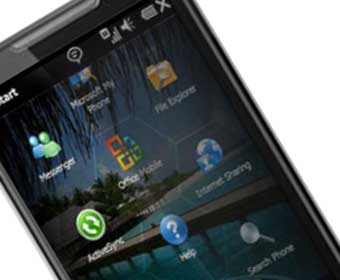By the end of October, key operators around the world will be launching various smartphones powered by the WP7 OS supplied by the likes of Samsung, LG, and HTC. Compared to previous versions, it is remarkable that the WP7 has managed to significantly narrow the gap in UE with Apple iOS.
October 20, 2010

By Malik Saadi
By the end of October, key operators around the world will be launching various smartphones powered by the WP7 OS supplied by the likes of Samsung, LG, and HTC. Compared to previous versions, it is remarkable that the WP7 has managed to significantly narrow the gap in UE with Apple iOS. Adding to the fact that Microsoft plans to spend a few hundred million dollars promoting the WP7, it is likely that Microsoft will make a strong come back to the smartphone game, but this will be noticeable only in 2011. As a result, Informa believes sales of Microsoft Windows Mobile smartphones could grow by 40 per cent in 2011 after a significant 7 per cent decline expected in 2010 due to lack of hero devices.
Microsoft is back to controlling the UI but what about differentiation?
It is interesting to see Microsoft taking back control of the UI and mandating minimum hardware requirements compared to the approach the company took with previous versions, where OEMs were given the choice to implement their own UIs and adapt the OS of the hardware/segment they were targeting. It is also interesting to note that allWP7 devices announced so far are based on Qualcomm Snapdragon. Using this chipset enables low power consumption and enhanced performance thanks to the deep software-hardware integration it offers.
With the WP7, OEMs’ differentiation is back to hardware features again but to a certain extent the addition of some apps. For example, while Samsung is differentiating its WP7 devices using storage capacity and the screen quality based on its AMOLED technology, LG is using DLNA and the keyboard as key differentiators. HTC is developing devices with larger display size and better resolution cameras up to 8Mpixel. Overall, WP7 comes with a consistent UI across all devices from all OEMs while device differentiation is based on hardware features mainly.
In a time where differentiation is rapidly shifting from hardware to software, it will be difficult for Microsoft to convince OEM partners to differentiate solely on hardware features. This situation could prevent key OEMs, that see software as their strength, from fully collaborating with Microsoft. In addition, lack of differentiation could harm economies of scale from individual OEMs, which could in turn affect the overall ASP of WP7 devices. The success of the WP7 ecosystem as a whole will greatly depend on the marketing machine Microsoft will deploy for promoting WP7 smartphones and on how users will react to these devices.
Lessons learned from previous mistakes
Although Microsoft has taken the “operator friendly” approach from the start, the company met with little success in the mobile market due to a number of strategic mistakes. It was too ambitious with its approach of targeting all mobile market segments with a single OS in similar fashion to its approach in desktop market (remember the small SPV targeting low-end smartphones and the big XDA targeting high-end? both phones were based on the same OS).
The 3 lessons learned from previous mistakes are:
1- To inject innovation one has to focus solely on the high-end segment. Innovation traditionally starts from this segment and then gradually infiltrates across all segments. (all successful OSs started this way including these from Apple and Blackberry).
2- Exporting its brand from the desktop to the mobile market is not a realistic approach. In order to entrench the mobile market Microsoft has first to establish a brand specifically built for the mobile market. The WP7 is built with this end in mind.
3- Consistent UE is a must for Microsoft if the company wants to establish a recognised stamp across all devices. Controlling the UI and hardware requirements is one way of achieving this end although this approach could be perceived as similar to Apple’s vertical approach.
Viewpoint
All in all, the mobile handset game is about the user experience. With theWP7, we believe that Microsoft could face competition but this will depend on how enabled devices are marketed. We believe that the WP7 will address the high-end segment for the next three years. Once Microsoft’s brand in the high-end smartphone market is established the company will look for ways of extending this brand to lower tier segments.
In addition, almost all WP7 partners among OEMs have already met a certain level of success with Android thanks to this platform flexibility for customisation while being proven commercially successful. This situation will make these OEMs anxious to continue supporting WP7 if enabled smartphones do not match the sales value generated by Android devices.
Read more about:
DiscussionYou May Also Like






.png?width=300&auto=webp&quality=80&disable=upscale)


_1.jpg?width=300&auto=webp&quality=80&disable=upscale)


.png?width=800&auto=webp&quality=80&disable=upscale)